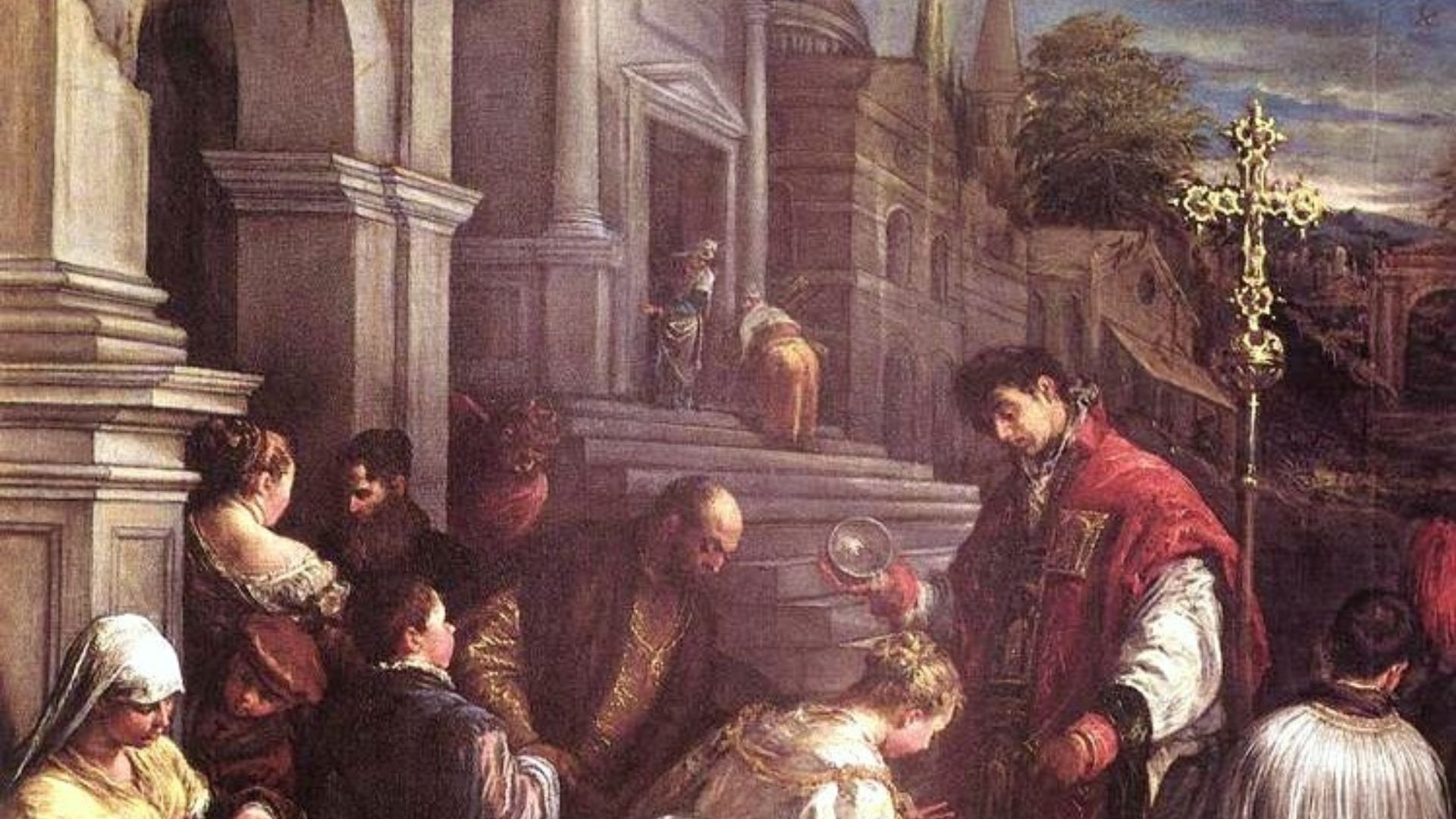Valentine’s Day is observed on February 14 every year and is a global celebration of love, affection, and sincere expressions. With their special someone, people exchange cards, flowers, and other tokens of love during this time. For a lot of people, this is a special chance to thank and show their loved ones how much they care. Nowadays, people celebrate their love for one another, send sincere messages to each other, and indulge in sweets on Valentine’s Day, which cuts across national boundaries.
However, have you ever wondered where this romantic holiday came from? Let’s explore the intriguing background of February 14 as Valentine’s Day.
Who was St. Valentine?
The origins of Valentine’s Day can be found in antiquity, when Christian customs and mythology were combined. Saint Valentine, a Roman priest from the third century, is the main inspiration behind this holiday. The life of Saint Valentine is the subject of several enthralling legends, all of which add to the day’s romantic atmosphere. Valentine’s Day is thought to have been established as a way to honor Saint Valentine’s life and legacy, though its precise beginnings are unknown.
Saint Valentine was well-known for his generosity and affection, especially towards the young couples in love. It is widely believed, that he he performed secret marriages for people at times when it was illegal to do so.
Eventually, after his deeds of love and kindness led to his murder, he was named the patron saint of love. When his deeds of compassion led to his death, he was ultimately named the patron saint of love.
Why is he associated with love?
On February 14, St. Valentine was beheaded and buried in a Christian cemetery north of the city on the Via Flaminia, near the Ponte Milvio. Pope Gelasius I established the Feast of St. Valentine on February 14th, 496 AD, as a way to honor St. Valentine. The day is observed ever since.
Saint Valentine is renowned for defying Emperor Claudius by officiating Christian marriages and distributing hearts made of parchment to serve as a reminder of God’s love. It is also thought that he secretly delivered letters to lovers who were jailed and split up by the system.
6 Interesting Facts About St. Valentine
- The St. Valentine who inspired the holiday may have been two distinct men
It is officially acknowledged by the Roman Catholic Church that St. Valentine was a real person who passed away approximately 270 AD. Pope Gelasius I, however, cast doubt on the martyr’s identity as early as 496 A.D., referring to the martyr and his deeds as “being known only to God.” According to one story from the 1400s, Valentine was a temple priest who assisted Christian couples in getting married and was later beheaded by Emperor Claudius II outside of Rome. According to a different story, Valentine was the Bishop of Terni when he was also crucified outside of Rome by Claudius II. These accounts seem to be about the same person because of their similarities. There is enough misunderstanding about St.
2. There’s a pope and about a dozen St. Valentines in all
To set him apart from the other twelve or so Valentines on the list, the saint we honor on Valentine’s Day is formally known as St. Valentine of Rome. Throughout history, a number of martyrs have gone by the name “Valentinus,” which comes from the Latin word meaning “worthy, strong, or powerful” and was a common nickname between the second and eighth centuries A.D. Of the saints recognized by the Roman Catholic Church, roughly twelve had the name Valentine, or a variant. St. Valentine Berrio-Ochoa, a Spanish member of the Dominican order who went to Vietnam and held the position of bishop until his beheading in 1861, is the most recent Valentine to be beatified. Berrio-Ochoa was canonized by Pope John Paul II in 1988. Pope Valentine even existed, though not much is known about him.
3. Valentine is the patron saint of numerous things, including epilepsy and beekeepers
It is expected that saints will remain active in the afterlife. Among their sacred responsibilities are hearing requests from living souls and mediating in matters of earthly concern. St. Valentine has extensive spiritual obligations in this regard. Not only is he invoked for protection against epilepsy and beekeeping, but also for protection against the plague, fainting, and traveling, in addition to his protection over the lives of romantic partners. He is also the patron saint of happily married couples and engaged couples, as one might expect.
4. Rome is the place where you can locate Valentine’s skull
The St. Valentine’s Day skull covered in flowers is on exhibit at the Basilica of Santa Maria in Cosmedin, Rome. Early in the 19th century, skeletal remains and other artifacts now connected to St. Valentine were discovered during the excavation of a catacomb close to Rome. These fragments of the deceased saint’s body have since been sent, as is customary, to reliquaries all over the world. Other portions of St. Valentine’s skeleton are on exhibit in England, France, Scotland, the Czech Republic, and Ireland.
5. Valentine’s Day may have been created by English poet Geoffrey Chaucer
Geoffrey Chaucer, an English medieval poet, frequently manipulated history by setting his fanciful historical settings for his lyrical characters, portraying them as authentic. Valentine’s Day romantic festivities are not known to have existed before Chaucer wrote a poem in the vicinity of 1375. In “Parliament of Foules,” he establishes a connection between the commemoration of St. Valentine’s Day and the custom of courtly love—a connection that was not made until his poem gained widespread recognition. In order for the day birds (and humans) to find a mate, February 14 is mentioned in the poem. Chaucer may have created the modern holiday when he penned, “For this was sent on Seynt Valentyne’s day / Whan every foul cometh ther to choose his mate.”
6. Numerous times a year, Valentine’s Day can be observed
Owing to the Roman Catholic calendar’s profusion of Saint Valentine celebrations, you have the option to honor the saint several times a year. One alternative is to commemorate St. Valentine of Viterbo on November 3, rather than just February 14. On January 7, you can celebrate St. Valentine of Raetia if you’d like to get ahead of the traditional Valentine’s Day festivities. The sole female saint, Valentine (Valentina), was a virgin who was martyred in Palestine on July 25, A.D. 308, and may be honored by women. Officially, the Eastern Orthodox Church honors St. Valentine twice: on July 6th as an elder of the church and on July 30th as a martyr.
Valentine’s Day 2024: Celebrations
While lovers everywhere celebrate Valentine’s Day on February 14, the festivities for the day begin on February 7 with Rose Day. February 8 is Propose Day, February 9 is Chocolate Day, February 10 is Teddy Day, February 11 is Promise Day, February 12 is Hug Day, and February 13 is Kiss Day.
People give gifts, flowers, and chocolates to the special people in their lives on Valentine’s Day as a way to show each other how much they care and how much they love each other. Galentine’s Day, observed on February 13 to honor female friendship, has gained popularity recently and is observed by many people worldwide.

























